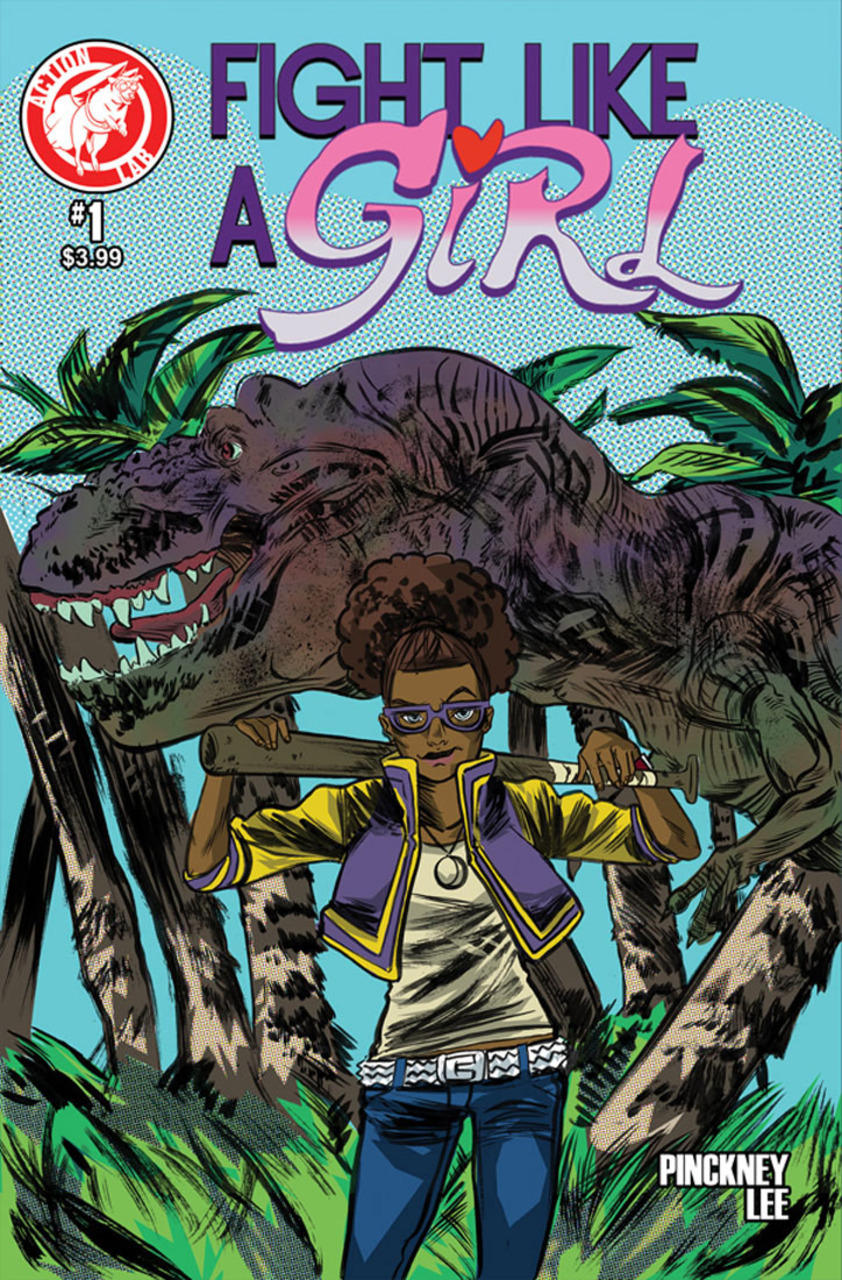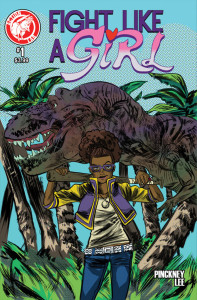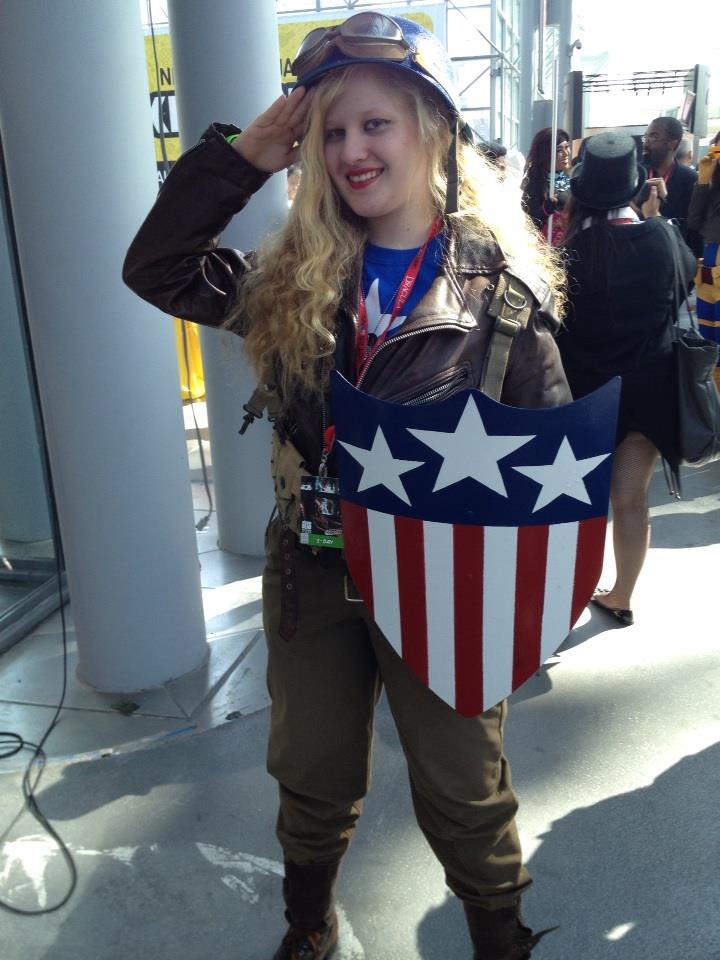“Fight Like A Girl” (Pinckney, Lee – Action Lab Comics) was like nothing else on the shelf at my local comic book shop. I liked the idea of it so much that I bought both available issues. The story follows Amarosa, a young woman who enters a series of trials to aid her terminally ill brother. Amarosa is informed she must face and defeat nine trials to accomplish her wish.
Amarosa is a determined young black female on a worthy mission – and she’s not in the habit of letting other people define her or her capabilities.
The Gods as Judges
At the start of the comic, Amarosa presents her wish to several gods who serve as judges, including the trickster god Loki. Pinckney and Lee make these gods their own versions, not leaning on or borrowing from previous comic book or movie representations.
The Ally
The first mortal we meet (aside from the protagonist) is Kaiden, a male friend of Amarosa’s. When Amarosa tells Kaiden that she will enter the Wishing Well, Kaiden’s initial reaction is worry and anger over her choice – but Amarosa quickly asserts that she has no choice because she needs to help her dying brother and can’t fail. Kaiden comes around quickly, offering his support.
In less than a page, Kaiden demonstrates how boys and men can be allies of feminism – and it isn’t at all contrived. He’s a friend who cares.
What Do You Think of Fairies?
When Amarosa arrives to fight, she’s greeted by a little fairy-like creature who is upbeat but not princessy. I’m not sure whether the character is male or female (or if that even matters), but s/he is dressed in pants.
Because let’s be real…does it make sense to wear a skirt or kilt if you’re flying around and above people/ Nope. This sensibility is also reflected in Amarosa’s purple and yellow clothing and glasses. She’s fashionable and practical.
The First Trial
During Amarosa’s first trial, she encounters what appears to be an attractive woman who is sunbathing. This woman calls Amarosa “homely” and a “little girl.” In the real world, women are frequently pitted against each other in a way that can damage them both. I won’t reveal more about the battle, but it’s safe to say that just like in the real world, things get ugly really fast in this type of conflict.
The Internal Journey
The hero must embark on both a journey of strength and an internal journey. For the female hero, the journey isn’t necessarily the same as the male’s because of how women and men are treated differently in society. During her first trial, Amarosa is told by another: “You need to figure out who you are.”
Story and Art
The first issue of “Fight Like A Girl” contains a couple of grammatical errors (we all make ’em, even us editors). The first several pages were also a bit text heavy, but this is excusable because the text provided necessary clarification on what was going on. Other writers and artists probably would have made the intro section into an entire comic, which isn’t always the best creative decision. In this comic, you get the prologue and first trial.
At first I thought Soo Lee’s art style might not be as clean as I personally prefer in comics, but within a few pages I realized that each line is not present as a ‘lazy extra,’ but it’s there to indicate something very specific, such as movement. This allows Lee to accomplish a great deal in each panel. Overall, you get more story in one issue as a result without the sense that plot has been crammed in.
While this is a coming of age story, it’s entertaining and gripping enough for anyone to read. This would be a great comic for parents, grandparents, and older siblings to read with children, although there is some violence.
I highly recommend “Fight Like A Girl” to those who love “The Hunger Games,” “The Wicked + The Divine,” and “Percy Jackson & The Olympians.”






